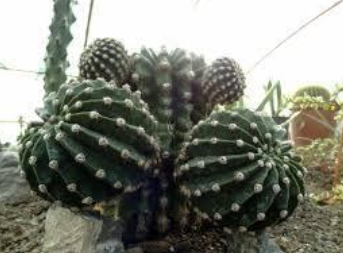
When do desert plants take up carbon dioxide and perform photosynthesis?
Answer
511.4k+ views
Hint: Just like other green plants, desert plants also get the nourishment by the photosynthesis. Until the sun goes down, desert plants do not open their pores on leaves for carbon dioxide.
Complete answer:
The process by which plants and certain organisms convert light energy into chemical energy to produce water, carbon dioxide, and other energy-rich compounds. Generally, plants perform photosynthesis during day time with the help of green pigment chlorophyll present in green plants, to produce their food.
But the plants found in deserts perform photosynthesis in the night time to produce carbon dioxide. It is simply due to the climate of deserts. In deserts, the climate is very hot during day time and the amount of rainfall is low, isn’t it?
So to prevent the water loss they perform photosynthesis during night time. Therefore the carbon dioxide is stored in the stomata that are the leaves of the xerophytes, and then they perform the process of photosynthesis the next day.
The actual reason behind this is Transpiration. The desert plants do not open stomata during the night time to absorb carbon dioxide where the temperature is too low during night time to prevent water loss.

Additional Information:
The plants grow in deserts are referred to as Xerophytes. Xerophytes are the plants that perform photosynthesis to absorb carbon dioxide during night time to prevent loss of water.
Note:
- The Xerophytes are variously adapted to conserve water due to the structural and functional processes of Xerophytes, to store a large amount of water during dry periods. The three main adaptive strategies of Xerophytes are succulence, drought tolerance, and drought avoidance.
- Xerophytes generally look spiny, swollen with tiny leaves. Some examples of Xerophytes are Cacti, pineapple, and other gymnosperm plants.
Complete answer:
The process by which plants and certain organisms convert light energy into chemical energy to produce water, carbon dioxide, and other energy-rich compounds. Generally, plants perform photosynthesis during day time with the help of green pigment chlorophyll present in green plants, to produce their food.
But the plants found in deserts perform photosynthesis in the night time to produce carbon dioxide. It is simply due to the climate of deserts. In deserts, the climate is very hot during day time and the amount of rainfall is low, isn’t it?
So to prevent the water loss they perform photosynthesis during night time. Therefore the carbon dioxide is stored in the stomata that are the leaves of the xerophytes, and then they perform the process of photosynthesis the next day.
The actual reason behind this is Transpiration. The desert plants do not open stomata during the night time to absorb carbon dioxide where the temperature is too low during night time to prevent water loss.

Additional Information:
The plants grow in deserts are referred to as Xerophytes. Xerophytes are the plants that perform photosynthesis to absorb carbon dioxide during night time to prevent loss of water.
Note:
- The Xerophytes are variously adapted to conserve water due to the structural and functional processes of Xerophytes, to store a large amount of water during dry periods. The three main adaptive strategies of Xerophytes are succulence, drought tolerance, and drought avoidance.
- Xerophytes generally look spiny, swollen with tiny leaves. Some examples of Xerophytes are Cacti, pineapple, and other gymnosperm plants.
Recently Updated Pages
Master Class 11 Economics: Engaging Questions & Answers for Success

Master Class 11 English: Engaging Questions & Answers for Success

Master Class 11 Social Science: Engaging Questions & Answers for Success

Master Class 11 Biology: Engaging Questions & Answers for Success

Class 11 Question and Answer - Your Ultimate Solutions Guide

Master Class 11 Business Studies: Engaging Questions & Answers for Success

Trending doubts
10 examples of friction in our daily life

One Metric ton is equal to kg A 10000 B 1000 C 100 class 11 physics CBSE

Difference Between Prokaryotic Cells and Eukaryotic Cells

1 Quintal is equal to a 110 kg b 10 kg c 100kg d 1000 class 11 physics CBSE

State the laws of reflection of light

Explain zero factorial class 11 maths CBSE




